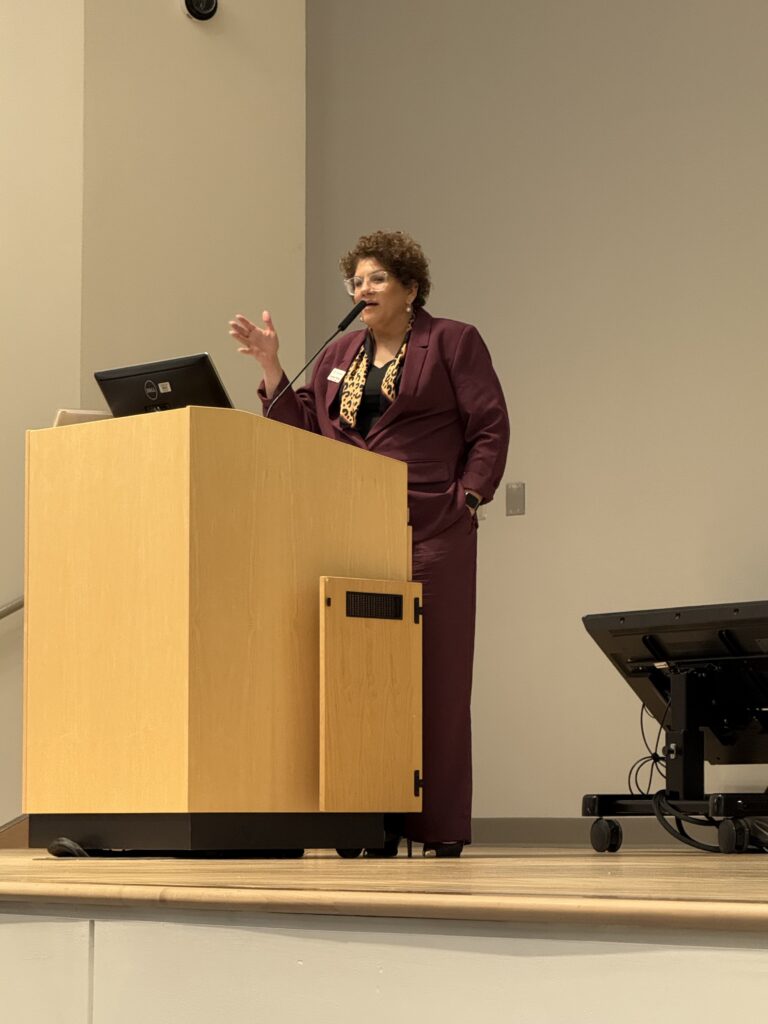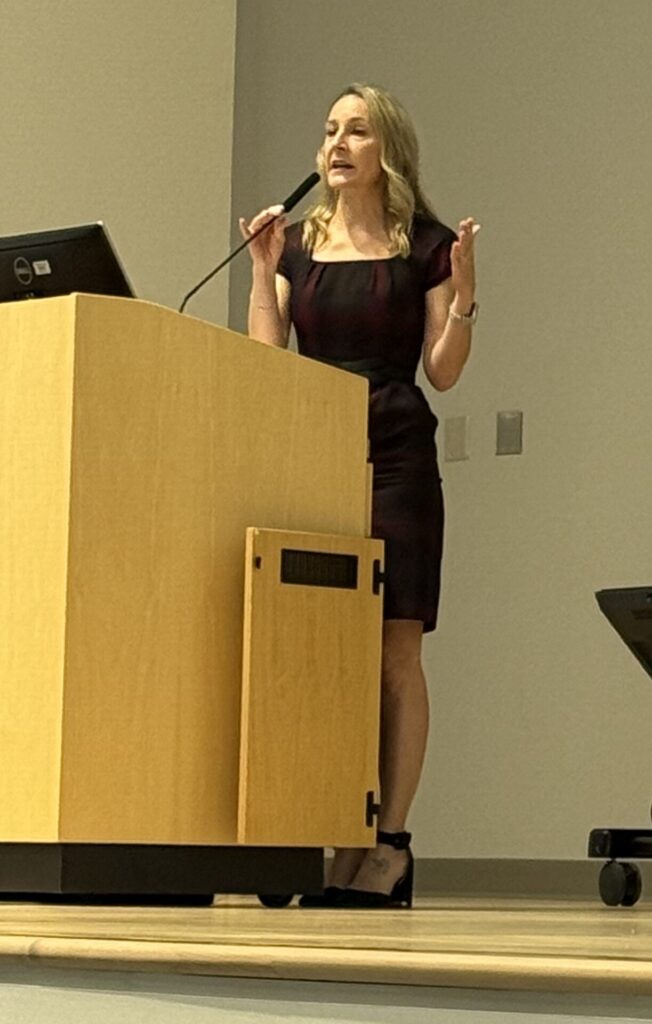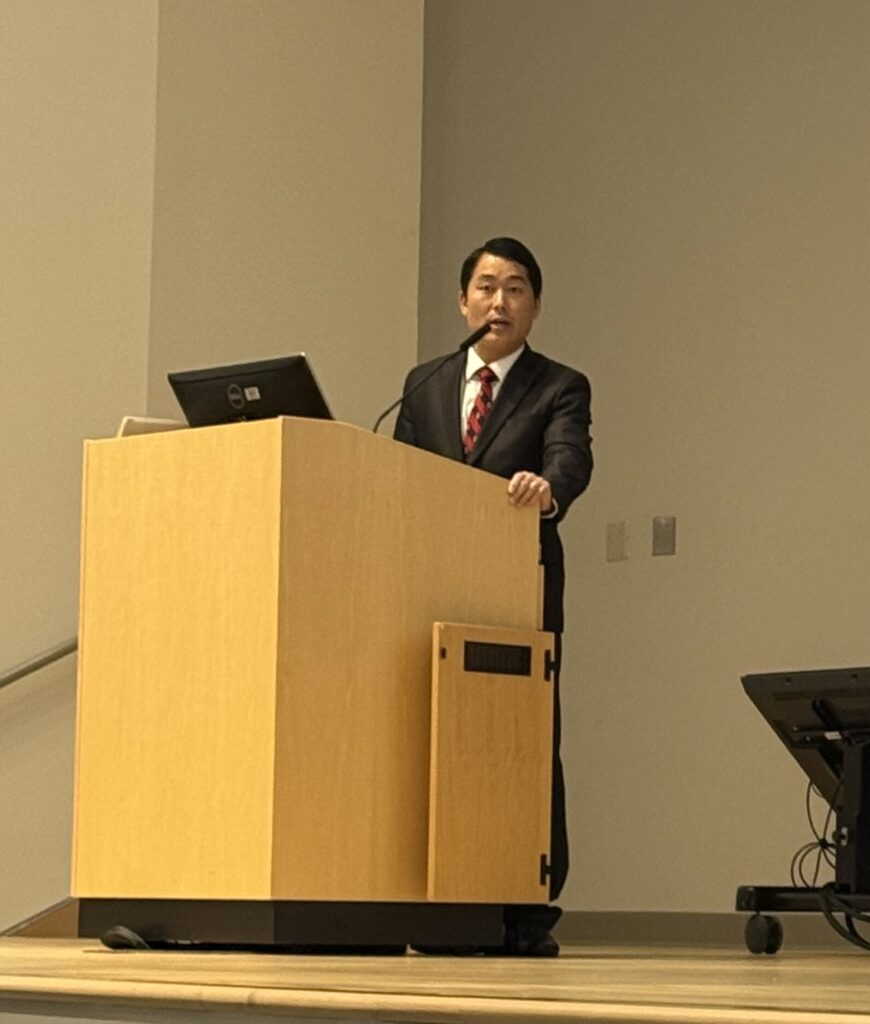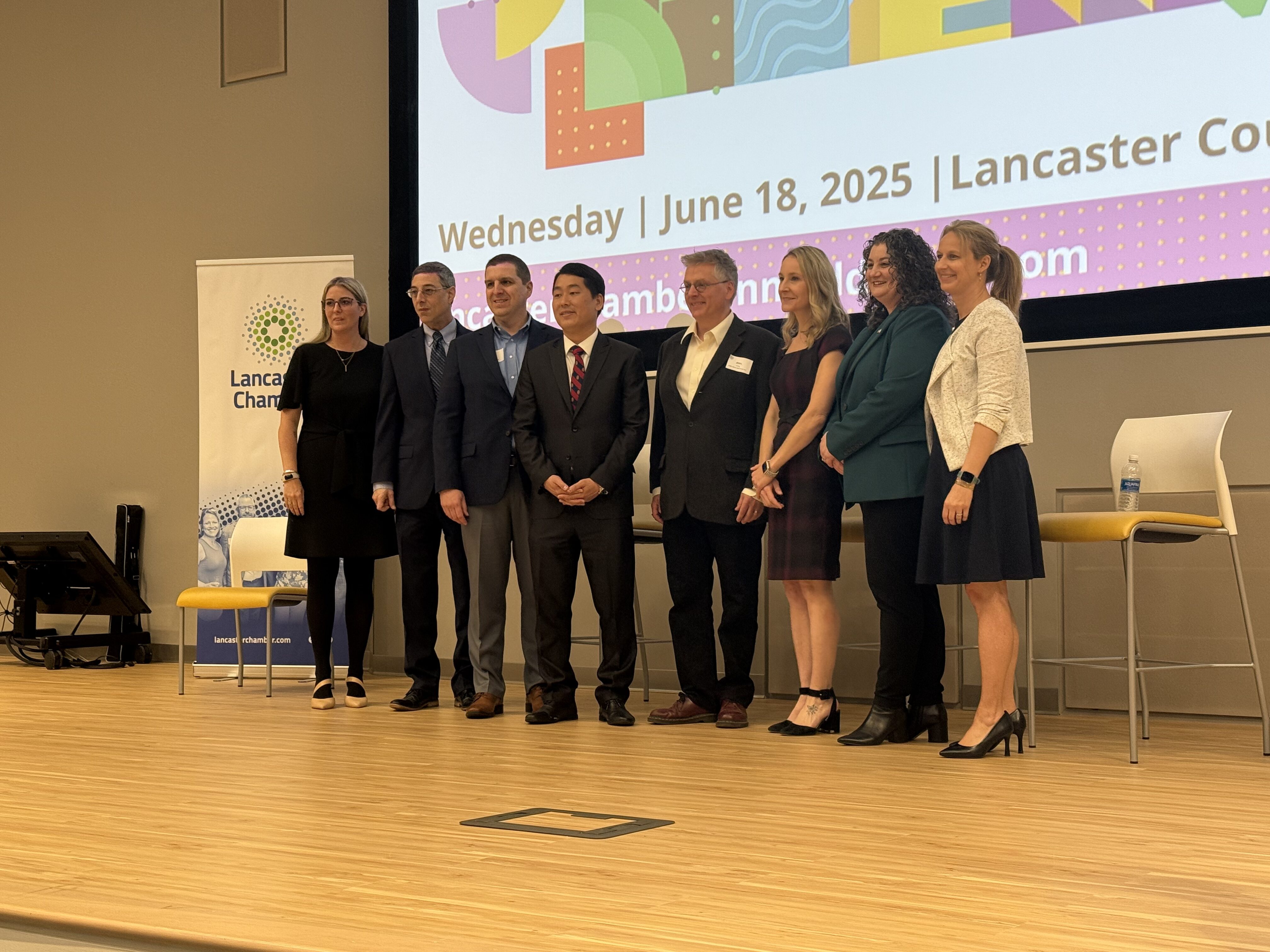The Lancaster Chamber’s annual State of the County event took place Friday, at St. Joseph’s University Lancaster, offering a deep dive into the key issues shaping the future of Lancaster County.
Vanessa Philbert, chair of the Lancaster Chamber Board and CEO of Community Action Partnership of Lancaster County, opened the event with a call to action for businesses, organizations and individuals. “Being at service to our community, our neighbors, our employers, our friends—these are the values that bind us together,” Philbert outlined the Chamber’s bold strategic vision for the county by 2035:
• Lancaster County will be the best place to live in Pennsylvania
• A recognized hub for business innovation and success
• A unified community where every person thrives

Philbert emphasized the importance of education, workforce development and housing in achieving this vision and encouraged attendees to think about what they can contribute to positive change. “In order to do good business, you have to be good to people,” she noted, underscoring the collaborative spirit needed to ensure the county’s future prosperity.
The event featured a series of presentations that provided data analysis and industry perspectives on key issues affecting Lancaster County.
Economy and Collaborative efforts
“Lancaster County government doesn’t do much on its own, and that’s a good thing,” said Lancaster County Commissioner, Ray D’Agostino. The county’s commitment to working with businesses and organizations drive growth. The county’s economy continues to outperform many other regions in the state. D’Agostino pointed to the efforts of SACA’s Tec Centro and Thaddeus Stevens College of Technology, that ensure the next generation is equipped to succeed.
D’Agostino also addressed issues such as housing, workforce shortages, safety and infrastructure, noting that Lancaster County must balance economic growth with the preservation of its rural landscapes and farmland. “The state of Lancaster County is strong and vibrant.”
Workforce and opportunities

Lauren Miller, associate program director for Educational Partnerships and executive director of the Lancaster County STEM Alliance, stated “Lancaster County has more jobs available than people.” Miller pointed to the 360,000 available positions in the region with only 290,000 individuals in the workforce. She emphasized the need for schools to not only educate students but also ensure they are prepared for the workforce demands of local businesses.
Miller shared data revealing a disparity in student proficiency across the county’s districts, with student proficiency in two districts a few miles apart is 11% and 71%, respectively. This challenge, exacerbated by the pandemic, calls for targeted educational efforts to prepare students for the jobs of tomorrow. Overall, Lancaster County is performing above state levels in math, English and science.
Housing market

Ryo Tashiro, outreach economist and advisor for the Federal Reserve Bank of Philadelphia, explained that while home price growth has slowed in the past 12-18 months, the region still faces significant affordability challenges. “Homeownership has become rapidly unaffordable in central PA, particularly in Lancaster.” Low housing supply, coupled with the “lock-in effect” (where current homeowners are reluctant to sell due to low mortgage rates), continues to drive prices upward.
Tashiro pointed to a rise in investor purchases, with approximately 18% of all homebuyers in Lancaster County being investors. The supply of new homes remains limited, accounting for only about 16% of all housing transactions in the area. As the market continues to tighten, Tashiro advised that home affordability is likely to remain a significant concern for future generations.
Innovation/ Economic Growth
Abby Smith, president & CEO of Team Pennsylvania , explained that fostering a thriving innovation ecosystem is key to positioning the county as a leader in emerging industries. “Lancaster County punches above its weight,” she said, encouraging the adoption of new technologies like artificial intelligence (AI) to help the region continue to stay competitive in the global economy.
Smith mentioned the work being done in Pittsburgh by Carnegie Mellon University and Penn State, which are already collaborating with the Department of Agriculture to bring robotics into the farming sector.
Panel Discussion
The event concluded with a panel discussion featuring leaders from various industries. Rich Willet, Ecore International, emphasized that innovation is a core value at his company, where AI is leveraged to reduce rubber waste. Jill Hackman, ELANCO School District, discussed the importance of career awareness, sharing that many students don’t know about the local job opportunities available to them. Hackman brought four students to demonstrate the growing interest in engineering and healthcare careers.
Alex King, Puffer Morris, raised concerns about the local real estate market, noting that new homes in Lancaster County are often priced at $300,000 or higher, making it difficult for young families to find affordable housing. He pointed out that many are being pushed to York County, while others are turning to intergenerational living arrangements to cope with rising costs.
For more information on the Lancaster Chamber’s strategic vision and ongoing initiatives, visit their website: Lancaster Chamber Website






